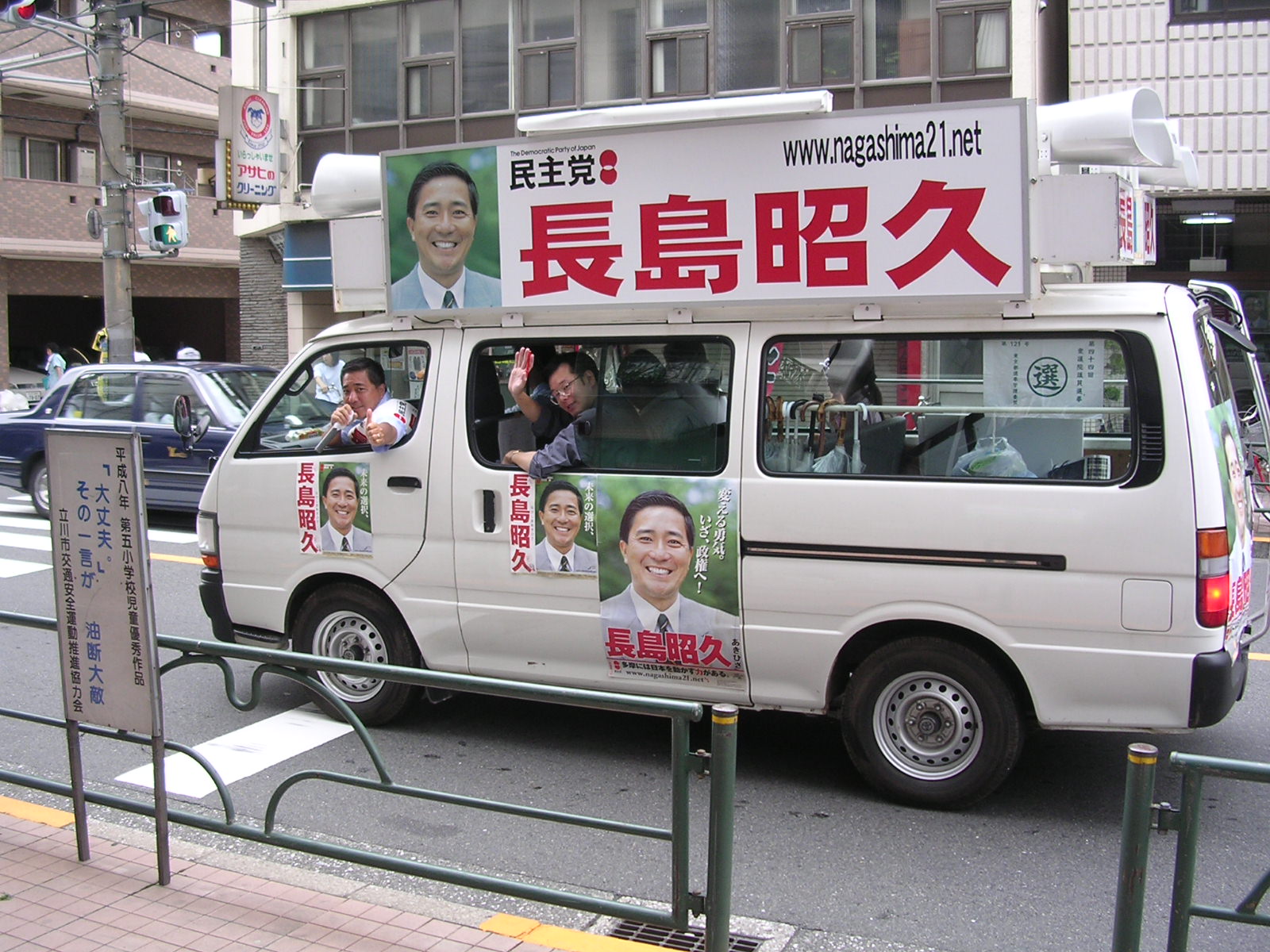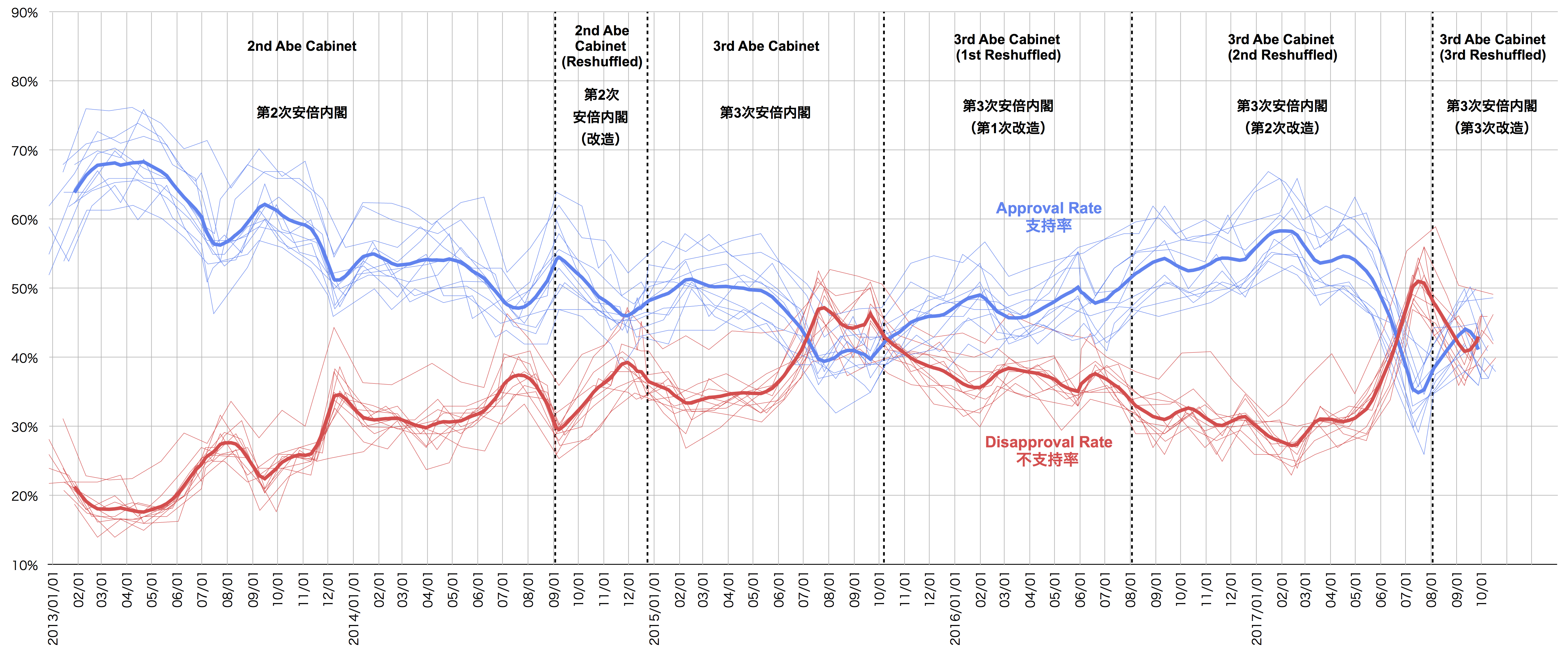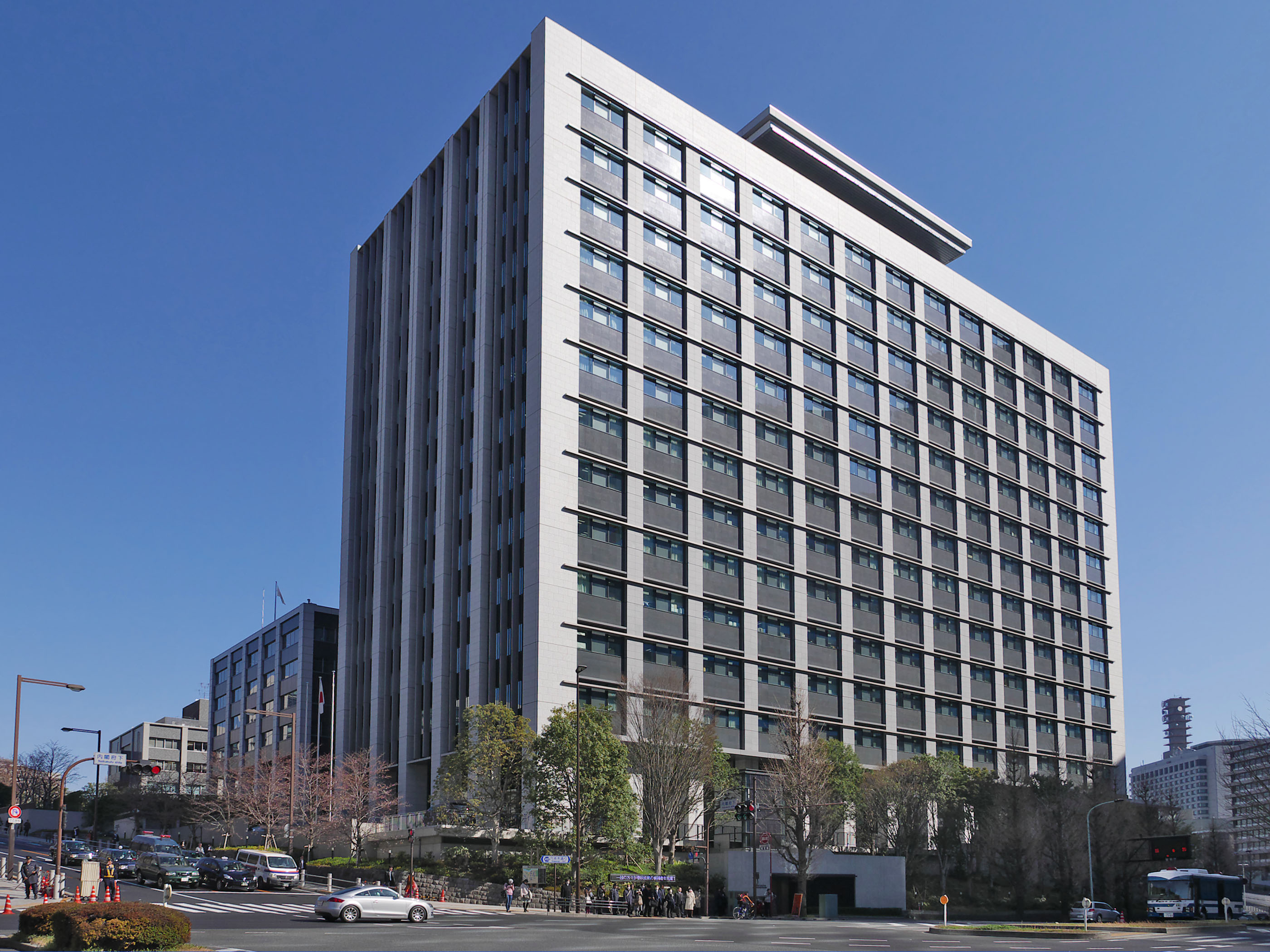|
Hyogo 2nd District
, also referred to as , is a constituency of the House of Representatives in the Diet of Japan. It is located in southwestern Hyogo Prefecture and consists of the Hyōgo, Kita and Nagata wards of Kobe. As of September 2015, 357,643 eligible voters were registered in the district. It is one of the 48 districts in the Kansai region that form the Kinki proportional representation block. The district was established as part of the electoral reform of 1994; the area was previously part of Hyōgo 1st district, which covered the whole of Kobe and elected five representatives by single non-transferable vote. Since the district's creation, Kazuyoshi Akaba of the Komeito party has been elected in six of the seven elections held. Koichi Mukoyama of the Democratic Party of Japan won the seat from Akaba in the 2009 election which brought the DPJ to power. Akaba subsequently defeated Mukoyama in the December 2012 election. List of representatives Election results ... [...More Info...] [...Related Items...] OR: [Wikipedia] [Google] [Baidu] |
House Of Representatives Of Japan
The is the lower house of the National Diet of Japan. The House of Councillors (Japan), House of Councillors is the upper house. The composition of the House is established by and of the Constitution of Japan. The House of Representatives has 465 members, elected for a four-year term. Of these, 176 members are elected from 11 multi-member constituencies by a party-list system of proportional representation, and 289 are elected from single-member constituencies. The overall voting system used to elect the House of Representatives is a Parallel voting, parallel system, a form of semi-proportional representation. Under a parallel system the allocation of list seats does not take into account the outcome in the single seat constituencies. Therefore, the overall allocation of seats in the House of Representatives is not proportional, to the advantage of larger parties. In contrast, in bodies such as the German ''Bundestag'' or the New Zealand Parliament the election of single-seat ... [...More Info...] [...Related Items...] OR: [Wikipedia] [Google] [Baidu] |
2012 Japanese General Election
General elections were held in Japan on 16 December 2012. Voters gave the Liberal Democratic Party a landslide victory, ejecting the Democratic Party from power after three years. It was the fourth worst defeat suffered by a ruling party in Japanese history. Voting took place in all representatives' constituencies of Japan including proportional blocks, in order to appoint Members of Diet to seats in the House of Representatives, the lower house of the National Diet of Japan. In July 2012, it was reported that the deputy prime minister Katsuya Okada had approached the Liberal Democratic Party to sound them out about dissolving the house of representatives and holding the election in January 2013. An agreement was reached in August to dissolve the Diet and hold early elections "shortly" following the passage of a bill to raise the national consumption tax. Some right-wing observers asserted that as the result of introducing the consumption tax to repay the Japanese public deb ... [...More Info...] [...Related Items...] OR: [Wikipedia] [Google] [Baidu] |
Tōru Toida
is a Japanese politician serving in the House of Representatives in the Diet (national legislature) as a member of the Liberal Democratic Party. Early life and education Toida was born and raised in Edogawa, Tokyo. He graduate with a degree from Dokkyo University. Career Toida was first elected in 1996. Right-wing positions He was a supporter of right-wing filmmaker Satoru Mizushima's 2007 film The Truth about Nanjing, which denied that the Nanking Massacre The Nanjing Massacre (, ja, 南京大虐殺, Nankin Daigyakusatsu) or the Rape of Nanjing (formerly romanized as ''Nanking'') was the mass murder of Chinese civilians in Nanjing, the capital of the Republic of China, immediately after the ... ever occurred.The Japan TimeNANJING MASSACRE 70TH ANNIVERSARY December 6, 2007Retrieved on August 21, 2012 References * External links Official website Living people 1951 births People from Edogawa, Tokyo Liberal Democratic Party (Japan) politicians M ... [...More Info...] [...Related Items...] OR: [Wikipedia] [Google] [Baidu] |
Takeaki Matsumoto
is a Japanese politician who served as Minister for Foreign Affairs in 2011. A native of Tokyo and graduate of the University of Tokyo, he was elected to the House of Representatives for the first time in 2000 after running unsuccessfully as an independent in 1996. Matsumoto is a great great grandson of Itō Hirobumi, the first Prime Minister of Japan. Matsumoto's father, Juro Matsumoto, was a senior member of the Liberal Democratic Party and was the Minister of Defense from August 1989 to February 1990. Matsumoto was selected as Foreign Minister of Japan in 2011 by Prime Minister Naoto Kan, after the resignation of his predecessor, Seiji Maehara, only two days before the March 11 earthquake and tsunami and subsequent Fukushima I nuclear disaster. In 2015 Matsumoto left the DPJ citing the party's opposition to the 2015 Japanese military legislation and cooperation with the JCP. Before the 2017 elections he joined the Liberal Democratic Party. In November 2022 Matsumoto w ... [...More Info...] [...Related Items...] OR: [Wikipedia] [Google] [Baidu] |
JANJAN
''JANJAN'' (), short for ''Japan Alternative News for Justices and New Cultures'' (), was a Japanese online newspaper started by Ken Takeuchi, journalist and former mayor of Kamakura, Kanagawa. Launched in February 2003, the newspaper is credited for pioneering citizen journalism in Japan. After registration, anyone was free to post comments on the JANJAN website. However, there were different windows for registering depending on the nationality or ethnicity of the potential poster (i.e. a different one for "Foreigners" (外国の方) and Japanese). The bulk of the newspaper's revenue came from advertisements by its corporate sponsor. Due a lack of revenue, the newspaper ceased publication at the end of March 2010. In May of the same year, it was replaced by a journalistic blog named "JanJanBlog", which was operated until 31 December 2013. , articles on both the newspaper and blog are no longer available. References * The article was originally a partial translation of the co ... [...More Info...] [...Related Items...] OR: [Wikipedia] [Google] [Baidu] |
2003 Japanese General Election
General elections were held in Japan on November 9, 2003. Incumbent Prime Minister Junichiro Koizumi of the Liberal Democrat Party won the election but with a reduced majority. The main opposition Democratic Party made considerable gains, winning 177 of the 480 seats in the House of Representatives, its largest share ever. Other traditional parties like the Communist Party and the Social Democrat Party lost a significant numbers of seats, making a two-party system a possibility in later Japanese politics. Background On October 11, 2003, Prime Minister Junichiro Koizumi dissolved the House of Representatives of the Diet after he was re-elected as the Liberal Democrat Party chief on September 20. The dissolution was based on Article 7 of the Constitution of Japan, which can be interpreted as saying that the Prime Minister has the power to dissolve the lower house after so advising the Emperor. The election was the first since Koizumi was named Prime Minister in April 2001. The m ... [...More Info...] [...Related Items...] OR: [Wikipedia] [Google] [Baidu] |
2005 Japanese General Election
General elections were held in Japan on 11 September 2005 for all 480 seats of the House of Representatives of Japan, the lower house of the Diet of Japan, almost two years before the end of the term taken from the last election in 2003. Prime Minister Junichiro Koizumi called the election after bills to privatize Japan Post were voted down in the upper house (which cannot be dissolved), despite strong opposition within his own Liberal Democratic Party (Japan) (LDP). The election handed a landslide victory to Koizumi's LDP, with the party winning 296 seats, the largest share in postwar politics and the first time the LDP had won an overall majority on its own in the House of Representatives since 1990. With its partner, New Komeito, the governing coalition then commanded a two-thirds majority in the lower house, allowing them to pass legislative bills over the objections of the upper house and (though the government did not attempt this) to approve amendments to the Constitution ... [...More Info...] [...Related Items...] OR: [Wikipedia] [Google] [Baidu] |
Hiroko Imura
is a common feminine Japanese given name. Name meanings Hiroko can be written using different kanji characters and can mean: *裕子, "kind child" *弘子, "Beautiful child" *寛子, " small child" *浩子, "large child" *博子, "wise child" *宏子, "large child" *広子, "broad child" *紘子, "large child" The name can also be written in hiragana or katakana. People with the name * Hiroko Anzai (安西 ひろこ, born 1979), Japanese model and idol * Hiroko Hatano (畑野 ひろ子, born 1975), Japanese supermodel and actress *, better known as Chikage Oogi, Japanese actress and politician *, Japanese singer, actress and television personality *, Japanese archer *, Japanese fencer *, Japanese slalom canoeist * Hiroko Konishi (小西 寛子, born 1975), Japanese voice actress *, Japanese handball player *, Japanese swimmer *, Japanese model *, Japanese writer * Hiroko Mita (三田 寛子, born 1966), Japanese singer and actress * Hiroko Moriguchi (森口 博子, born 1968), ... [...More Info...] [...Related Items...] OR: [Wikipedia] [Google] [Baidu] |
Yomiuri Shimbun
The (lit. ''Reading-selling Newspaper'' or ''Selling by Reading Newspaper'') is a Japanese newspaper published in Tokyo, Osaka, Fukuoka, and other major Japanese cities. It is one of the five major newspapers in Japan; the other four are the ''Asahi Shimbun'', the ''Chunichi Shimbun (Tokyo Shimbun)'' the ''Mainichi Shimbun'', and the '' Nihon Keizai Shimbun''. It is headquartered in Otemachi, Chiyoda, Tokyo.' It is a newspaper that represents Tokyo and generally has a conservative orientation. It is one of Japan's leading newspapers, along with the Osaka-based liberal (Third way) Asahi Shimbun and the Nagoya-based Social democratic Chunichi Shimbun. It is published by regional bureaus, all of them subsidiaries of The Yomiuri Shimbun Holdings, Japan's largest media conglomerate by revenue and the second largest media conglomerate by size behind Sony,The Yomiuri Shimbun Holdings is the largest media conglomerate by revenue in Japan, while Sony is Japan's largest media con ... [...More Info...] [...Related Items...] OR: [Wikipedia] [Google] [Baidu] |
2014 Japanese General Election
General elections were held in Japan on 14 December 2014. Voting took place in all Representatives constituencies of Japan including proportional blocks to elect the members of the House of Representatives, the lower house of the National Diet of Japan. As the cabinet resigns in the first post-election Diet session after a general House of Representatives election (Constitution, Article 70), the lower house election also led to a new election of the prime minister in the Diet, won by incumbent Shinzō Abe, and the appointment of a new cabinet (with some ministers re-appointed). The voter turnout in this election remains the lowest in Japanese history. Background In 2012, the Democratic Party government under Yoshihiko Noda decided to raise the Japanese consumption tax. This unpopular moved allowed the Liberal Democratic Party under Shinzo Abe to regain control of the Japanese government in the 2012 Japanese general election. Abe proceeded to implement a series of economic prog ... [...More Info...] [...Related Items...] OR: [Wikipedia] [Google] [Baidu] |
Cabinet Office (Japan)
The (CAO) is an agency of the Cabinet of Japan. It is responsible for handling the day-to-day affairs of the Cabinet. The Cabinet Office is formally headed by the Prime Minister. Ministers History The Cabinet Office was established on 6 January 2001, following the reorganization of the central government. It was created to assist in the planning and overall coordination of government policies led by the Cabinet (including the Cabinet Secretariat). The Cabinet Office is different from other ministries and agencies, as it is installed in the Cabinet and includes several Ministers of State called Minister of State for Special Missions. Early on, some argued it was inappropriate to use the name Cabinet Office because "it is an organization that divides and manages administrative affairs and not the cabinet itself". The National Administrative Organization Law does not apply, and all necessary items are stipulated in the Cabinet Office Establishment Law. Since many important ... [...More Info...] [...Related Items...] OR: [Wikipedia] [Google] [Baidu] |





